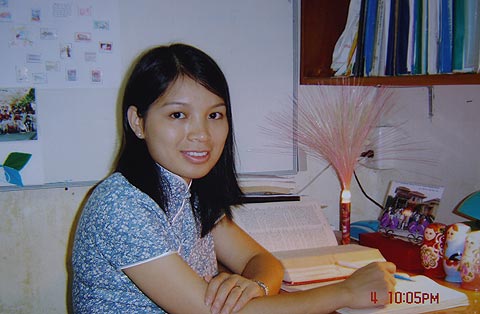'Doctor' amputated gecko
After ten years of research, Dr. Ngo Thai Lan (Faculty of Biology, Hanoi Pedagogical University 2) has found out the process of reproduction of amputated geckos, contributing to the conservation of useful reptiles that are in great danger. strains.
In the near future, Dr. Ngo Thai Lan will publish a book on the process of understanding the peanut jellyfish life to facilitate the teaching and conservation of reptiles this quarter.
'Invite' her husband to catch a gecko
The dead-end gecko is a heat-resistant reptile with the scientific name Gehyra Mutilata Wiegmann (also known as jellies, torn hooks, tear marks , house lizards). This is a wild reptile but very close to humans, they often live in or near the house. The food of geckos is mainly mosquito insects, cockroaches, insects.
In traditional medicine, amputated geckos are used as medicine to cure many diseases, especially tuberculosis, asthma. Because this is a precious reptile, many people seek to hunt, leading to scarcity and this type of extinction.

Dr. Ngo Thai Lan.
"If you know that the gecko 's reproductive cycle will determine which period should not be caught, the amphibious growth is helping to preserve this precious animal," said Dr Lan.
From this thought, since 1999, Dr. Lan and her husband have been researching and learning about dead-end geckos.
To facilitate monitoring the growth and development of geckos, Dr. Lan made stables in the house, and together with her husband went to catch geckos to raise: 'There are nights when the couple take turns looking at geckos, For geckos to eat, take the samples until they go to sleep, it is already bright ' , Dr. Lan recalls.
Find ways to preserve
It took 6 years, and Dr. Lan initially found out the cycle of gecko. According to Dr. Lan, the sexual cycle of male amphibians is divided into three phases.
During the reproductive period, amputated geckos are strong from March to June and from July to August. At the time of maternity leave, a few individuals can still have sperm and reproduce in November to December. And the cycle of developing the ovule of the gecko is all year round. But there are three concentrated stages of ovulation: from late March to May; from the end of July to September and from November to December.

Geckos.
Also through the study, Dr. Lan found that in one year, there are two periods when the youngest ones appear the most are June to July and October to November.
From these results, Dr. Lan stated that only adult geckos should be caught after the breeding season (from October to March) to ensure the number of species will not be reduced sharply.
'To protect the amphibious penguin, it is necessary to promote propaganda and instruct people how to properly exploit and encourage the cultivation of geckos because this reptile is easy to raise and friendly and helpful to humans' , Dr. Lan said and will publish a book about the process of understanding the life of the gecko species to facilitate teaching and conservation of this reptile species.
- Unknown things about the world of geckos are amazing
- Discover new species of gecko in Vietnam
- The discovery of gecko fossils lies in amber dating from nearly 100 million years
- The golden snake tree plays a gecko in the secret
- Confusing reality in the experiment of breaking gecko eggs
- Marvel at the form of
- Video: Specialized desert gecko
- Gecko hand glove
- The largest gecko species exists on Earth
- Discover new species of gecko
- Self-cleaning adhesive inspired by gecko feet
- Successfully studied electronic skin to help disguise as gecko
 The most famous scientific failures in history
The most famous scientific failures in history The son carries the 'bad gene' of genius Albert Einstein
The son carries the 'bad gene' of genius Albert Einstein Isaac Newton
Isaac Newton The birth of the microscope
The birth of the microscope